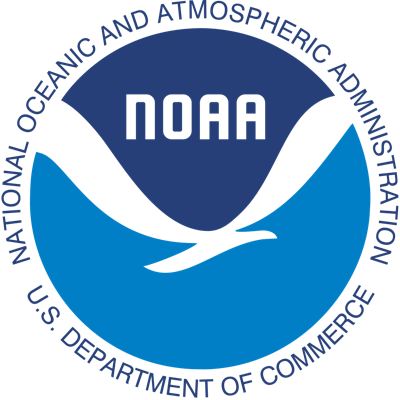Description
NEW GOES-19 Data!! On April 4, 2025 at 1500 UTC, the GOES-19 satellite will be declared the Operational GOES-East satellite. All products and services, including NODD, for GOES-East will transition to GOES-19 data at that time. GOES-19 will operate out of the GOES-East location of 75.2°W starting on April 1, 2025 and through the operational transition. Until the transition time and during the final stretch of Post Launch Product Testing (PLPT), GOES-19 products are considered non-operational regardless of their validation maturity level. Shortly following the transition of GOES-19 to GOES-East, all data distribution from GOES-16 will be turned off. GOES-16 will drift to the storage location at 104.7°W. GOES-19 data should begin flowing again on April 4th once this maneuver is complete.
NEW GOES 16 Reprocess Data!! The reprocessed GOES-16 ABI L1b data mitigates systematic data issues (including data gaps and image artifacts) seen in the Operational products, and improves the stability of both the radiometric and geometric calibration over the course of the entire mission life. These data were produced by recomputing the L1b radiance products from input raw L0 data using improved calibration algorithms and look-up tables, derived from data analysis of the NIST-traceable, on-board sources. In addition, the reprocessed data products contain enhancements to the L1b file format, including limb pixels and pixel timestamps, while maintaining compatibility with the operational products. The datasets currently available span the operational life of GOES-16 ABI, from early 2018 through the end of 2024. The Reprocessed L1b dataset shows improvement over the Operational L1b products but may still contain data gaps or discrepancies. Please provide feedback to Dan Lindsey (dan.lindsey@noaa.gov) and Gary Lin (guoqing.lin-1@nasa.gov). More information can be found in the [GOES-R ABI Reprocess User Guide](https://github.com/NOAA-Big-Data-Program/nodd-data-docs/blob/main/GOES/GOES-R_ABI_Reprocessed_L1b_User_Guide-v1.1.pdf).
NOTICE: As of January 10th 2023, GOES-18 assumed the GOES-West position and all data files are deemed both operational and provisional, so no ‘preliminary, non-operational’ caveat is needed. GOES-17 is now offline, shifted approximately 105 degree West, where it will be in on-orbit storage. GOES-17 data will no longer flow into the GOES-17 bucket. Operational GOES-West products can be found in the GOES-18 bucket.
GOES satellites (GOES-16, GOES-17, GOES-18 & GOES-19) provide continuous weather imagery and
monitoring of meteorological and space environment data across North America.
GOES satellites provide the kind of continuous monitoring necessary for
intensive data analysis. They hover continuously over one position on the surface.
The satellites orbit high enough to allow for a full-disc view of the Earth. Because
they stay above a fixed spot on the surface, they provide a constant vigil for the
atmospheric "triggers" for severe weather conditions such as tornadoes, flash floods,
hailstorms, and hurricanes. When these conditions develop, the GOES satellites are able
to monitor storm development and track their movements. SUVI products available in both NetCDF and FITS.
Update Frequency
New data is added as soon as it's available
License
NOAA data disseminated through NODD are open to the public and can be used as desired.
NOAA makes data openly available to ensure maximum use of our data, and to spur and encourage exploration and innovation throughout the industry. NOAA requests attribution for the use or dissemination of unaltered NOAA data. However, it is not permissible to state or imply endorsement by or affiliation with NOAA. If you modify NOAA data, you may not state or imply that it is original, unaltered NOAA data.
Documentation
https://github.com/NOAA-Big-Data-Program/nodd-data-docs/tree/main/GOES
Managed By

See all datasets managed by NOAA.
Contact
For questions related to specific GOES Products, please visit the "[GOES-R website](https://www.ncei.noaa.gov/products/satellite/goes-r-series)" and navigate to the Help section.
For any questions regarding data delivery or any general questions regarding the NOAA Open Data Dissemination (NODD) Program, email the NODD Team at nodd@noaa.gov.
We also seek to identify case studies on how NOAA data is being used and will be featuring those stories in joint publications and in upcoming events. If you are interested in seeing your story highlighted, please share it with the NODD team by emailing nodd@noaa.gov
How to Cite
NOAA Geostationary Operational Environmental Satellites (GOES) 16, 17, 18 & 19 was accessed on DATE from https://registry.opendata.aws/noaa-goes.
Usage Examples
Tutorials
Tools & Applications
Publications
-
Beginner’s Guide to GOES-R Series Data by Danielle Losos
-
Billions of Birds Migrate. Where Do They Go? by National Geographic
-
Comparison of Lightning Forecasts from the High-Resolution Rapid Refresh Model to Geostationary Lightning Mapper Observations by Brian K. Blaylock, and John D. Horel
-
Embracing the cloud for climate research by North Carolina State University’s North Carolina Institute for Climate Studies
-
GOES Quick Guides (Spanish) by Anthony Segura García
-
Identifying the Causes of Pyrocumulonimbus (PyroCb) by Emiliano Díaz Salas-Porras, Kenza Tazi, Ashwin Braude, Daniel Okoh, Kara D. Lamb, Duncan Watson-Parris, Paula Harder, and Nis Meinert
-
Imaging Considerations From a Geostationary Orbit Using the Short Wavelength Side of the Mid-Infrared Water Vapor Absorption Band by N.B. Miller, M.M. Gunshor, A.J. Merrelli, T.S. L'Ecuyer, T.J. Schmit, J.J. Gerth, N.J. Gordillo
-
Observations of lightning in relation to transitions in volcanic activity during the 3 June 2018 Fuego Eruption by Christopher J. Schultz, Virginia P. Andrews, Kimberly D. Genareau, and Aaron R. Naeger
-
Solar irradiance forecasting for the solar powered future by Solcast
-
SunCast: Solar Irradiance Nowcasting from Geosynchronous Satellite Data by Dhileeban Kumaresan, Richard Wang, Ernesto Martinez, Richard Cziva, Alberto Todeschini, Colorado J Reed, Hossein Vahabi
-
The Use of Composite GOES-R Satellite Imagery to Evaluate a TC Intensity and Vortex Structure Forecast by an FV3GFS-Based Hurricane Forecast Model by Shaowu Bao, Zhan Zhang, Evan Kalina, and Bin Liu



